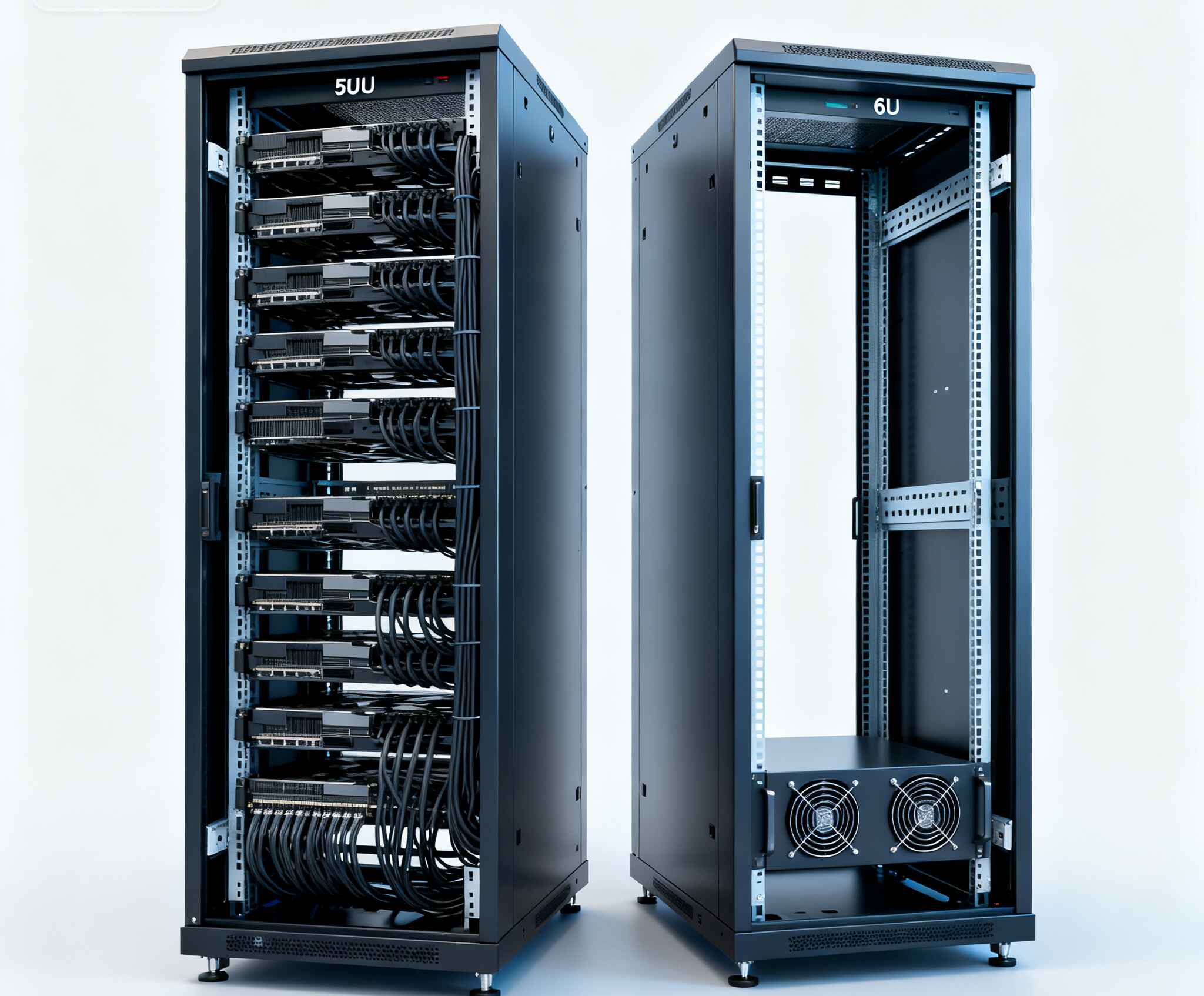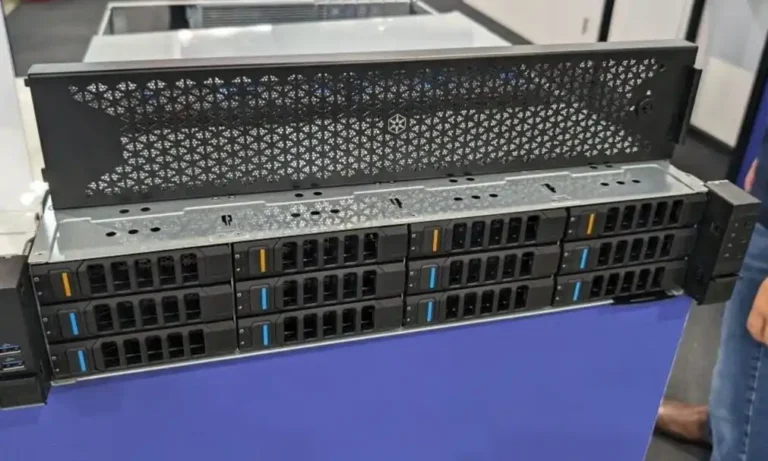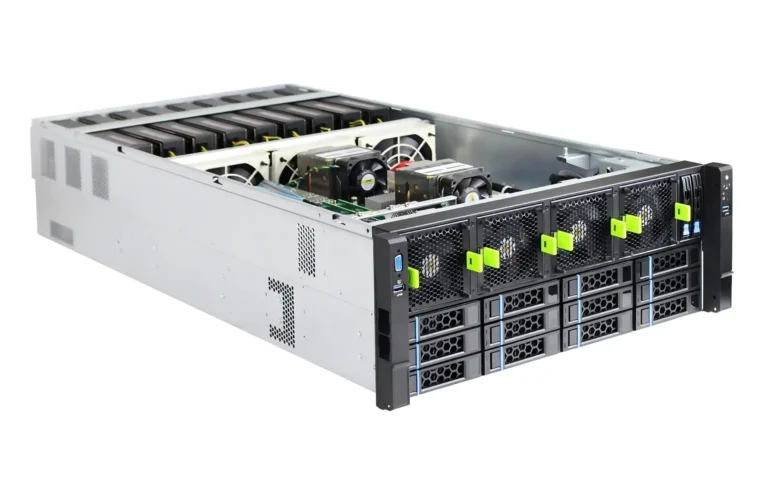You’re packing six hungry GPUs into a rack box and you dont want drama. Do you go 5U or 6U? Short take: both can work; 6U gives you more breathing room (cables, cooling, PSU headroom), while 5U leans on density and tight craft. Below I’ll break it down in plain talk, with real-world scenes and a quick spec table. I’ll also point to IStoneCase gear and services that make this build less… spicy.
FYI: 1U = 1.75 inches. That tiny extra 1U jump from 5U to 6U equals 1.75″ more vertical clearance. It matters.
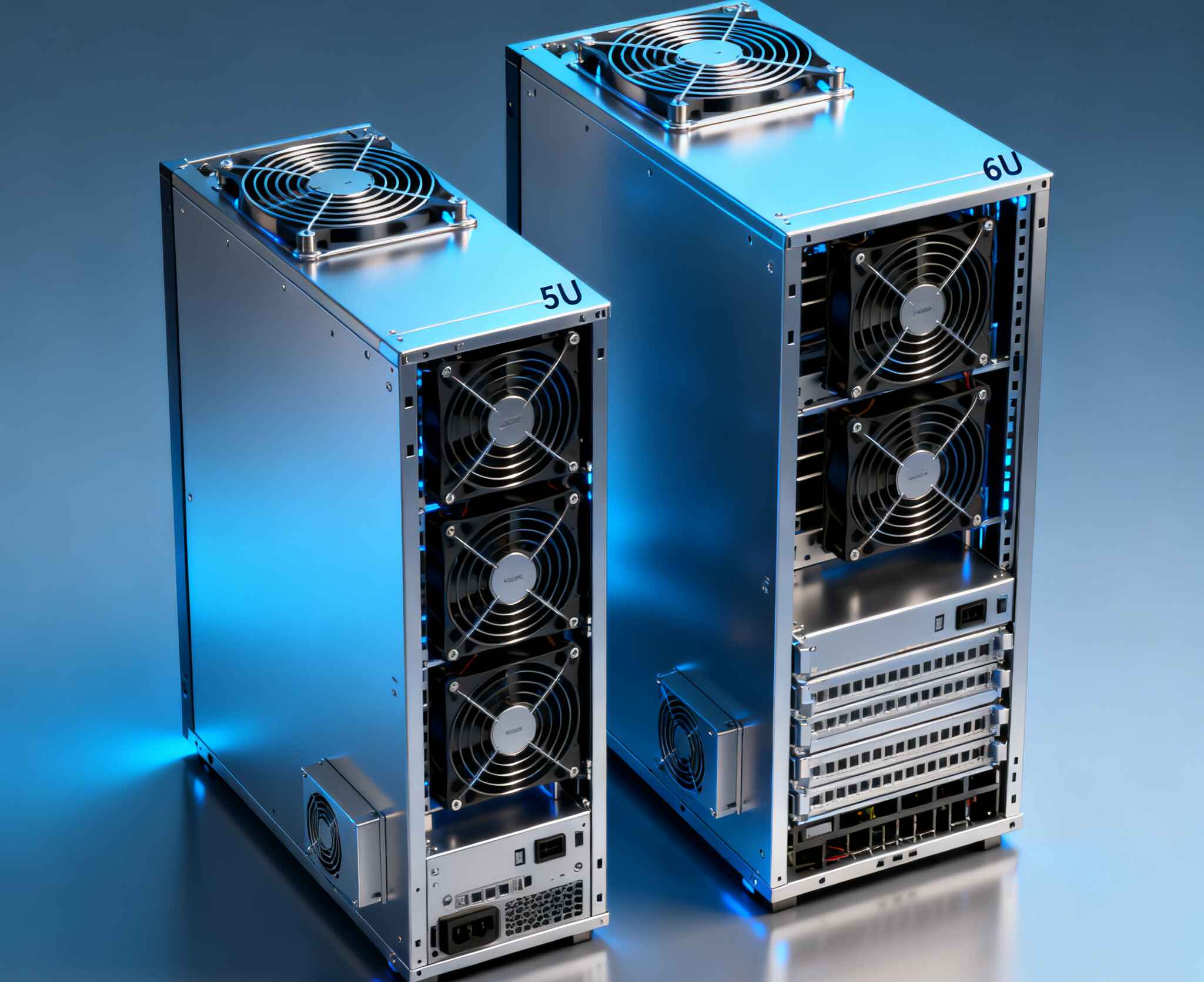
5U GPU Server Case vs 6U GPU Server Case (6× high-power GPUs)
What changes with one more rack unit?
Cable bend radius, fan/radiator options, and service space. With six double-wide cards, you’ll route 12V-2×6/12VHPWR leads up top. In 6U, those cables can run straight out then bend later; in 5U, you often need low-profile plugs or 90° heads to avoid “pinch bends.” Less strain equals fewer flaky power issues under load.
Cooling story.
A 6U chassis commonly fits thicker fan walls and even dual 480 mm rads for hybrid loops. A 5U case can still cool hard—think high-static-pressure fan banks and dual 360 mm rads—but noise climbs faster, and airflow tuning turns into a craft project. If your rack lives near humans, 6U stays calmer at the same watts.
Power delivery.
Six big GPUs mean big transient spikes. 6U frames more often accept higher-watt CRPS PSU sleds (and cleaner cable dressing). 5U can feed them too, but you’ll juggle PSU form factor, cable reach, and airflow trade-offs. Don’t overbuild cost, just avoid under-building rails and cables.
Rack unit math (1U = 1.75 in) and clearance
- 5U height ≈ 8.75″; 6U height ≈ 10.5″.
- That extra 1.75″ lets you keep a short straight section before any cable bend—a small thing that prevents melty connectors and mystery throttling.
- In 5U, plan routing early: soft-sleeved leads, right-angle adapters, or flipped PSU looms. In 6U, you usually just… route and go.
12VHPWR / 12V-2×6 cable bend radius and headroom
Keep a healthy straight run out of the connector before turning. In 5U, don’t yank the cable down immediately; in 6U, it’s easier to respect the bend. This is boring, yes, but it’s the kind of boring that keeps training runs from face-planting at 2 a.m.
Airflow path and radiator support (360 mm vs 480 mm)
- 5U: strong front-to-back fan wall, dual 360 mm rads are common. Great if you accept higher fan curves.
- 6U: room for thicker fan trays and dual 480 mm rads in many layouts, which buys you lower RPMs and better acoustics under sustained load.
Real-world scenarios: training boxes, render rigs, on-prem inference
Dense rack row: when 5U shines
You’re squeezing capacity per rack, power is capped per PDU, and you run hot but controlled jobs. 5U gives 1.2 GPUs per U (6 cards / 5U). If your team is disciplined with cable kits, fan curves, and dust control, 5U can be a tidy fit. Think of it like a race car: tight tolerances, rewarding when dialed-in.
Serviceability and noise budget: why 6U stays calmer
Labs, mixed offices, or sites where techs swap cards often? The 6U makes sense. Hands fit. Cables don’t fight you. Fan trays breathe. Your noise budget stays sane. It’s not magic—just more volume for air mass and straighter cable runs. Less fiddly, more resilient.
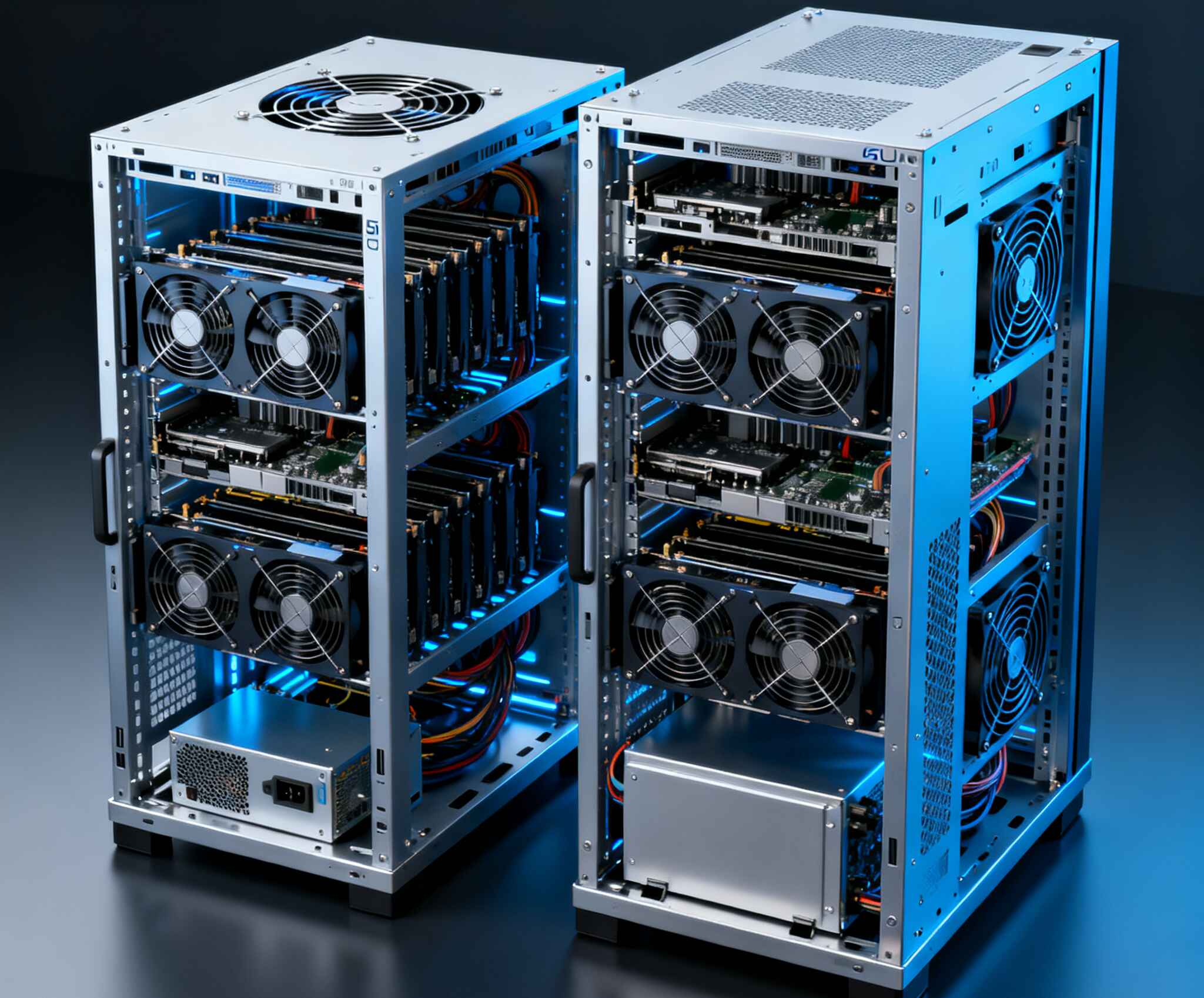
Spec table: 5U vs 6U for six GPUs
| Dimension / Feature | 5U GPU Server Case | 6U GPU Server Case | Why it matters |
|---|---|---|---|
| Vertical space (1U = 1.75″) | ~8.75″ total height | ~10.5″ total height | Extra 1.75″ reduces cable stress and eases cooler fit |
| GPU fit (six high-power) | Achievable with tight routing | Achievable with margin | Both can do 6× GPUs; 6U is less touchy |
| Cable bend & connectors | Needs careful 12V-2×6 routing, low-profile plugs help | Straight-out then bend, easy mode | Healthier connectors under load |
| Radiator / fan volume | Dual 360 mm typical, higher RPM | Dual 480 mm possible, lower RPM | Same watts, less noise in 6U |
| PSU options | Compact high-watt units; planning required | Larger CRPS sleds common | Transients handled with more grace |
| Density (GPUs per U) | 1.2 GPUs/U | 1.0 GPUs/U | 5U wins on density, 6U wins on serviceability |
| Field service time | Tighter, more cable gymnastics | Faster swaps, cleaner access | Save hands (and tempers) with 6U |
IStoneCase options (server rack builds that just work)
If you want a server rack pc case that doesn’t fight back, check these:
- IStoneCase GPU portfolio — see all GPU Server Case options, tuned for performance and durability.
- 5U line — explore 5U GPU Server Case if density is your north star and you’re ok-ish with careful cabling.
- 6U line — the breathing-room pick: 6U GPU Server Case for quieter cooling and friendlier service.
- Model callouts:
- ISC GPU Server Case WS04A2 — a proven 4U platform when you dont need all six GPUs or you want a compact computer case server layout.
- ISC GPU Server Case WS06A — a roomy server pc case path for 6× card builds, strong airflow paths, and tidy cable lanes.
- Need custom internals, rails, or oddball airflow? Tap Customization Server Chassis Service for OEM/ODM tweaks: fan trays, cable looms, CRPS backplanes, even bespoke brackets.
- Or just start at the IStoneCase home to browse rackmount, wallmount, NAS, ITX, and guide rails that pair with your atx server case or GPU nodes.
IStoneCase is built around practical builds—fast lead times, robust sheet-metal work, and repeatable thermals—not brochure fluff.
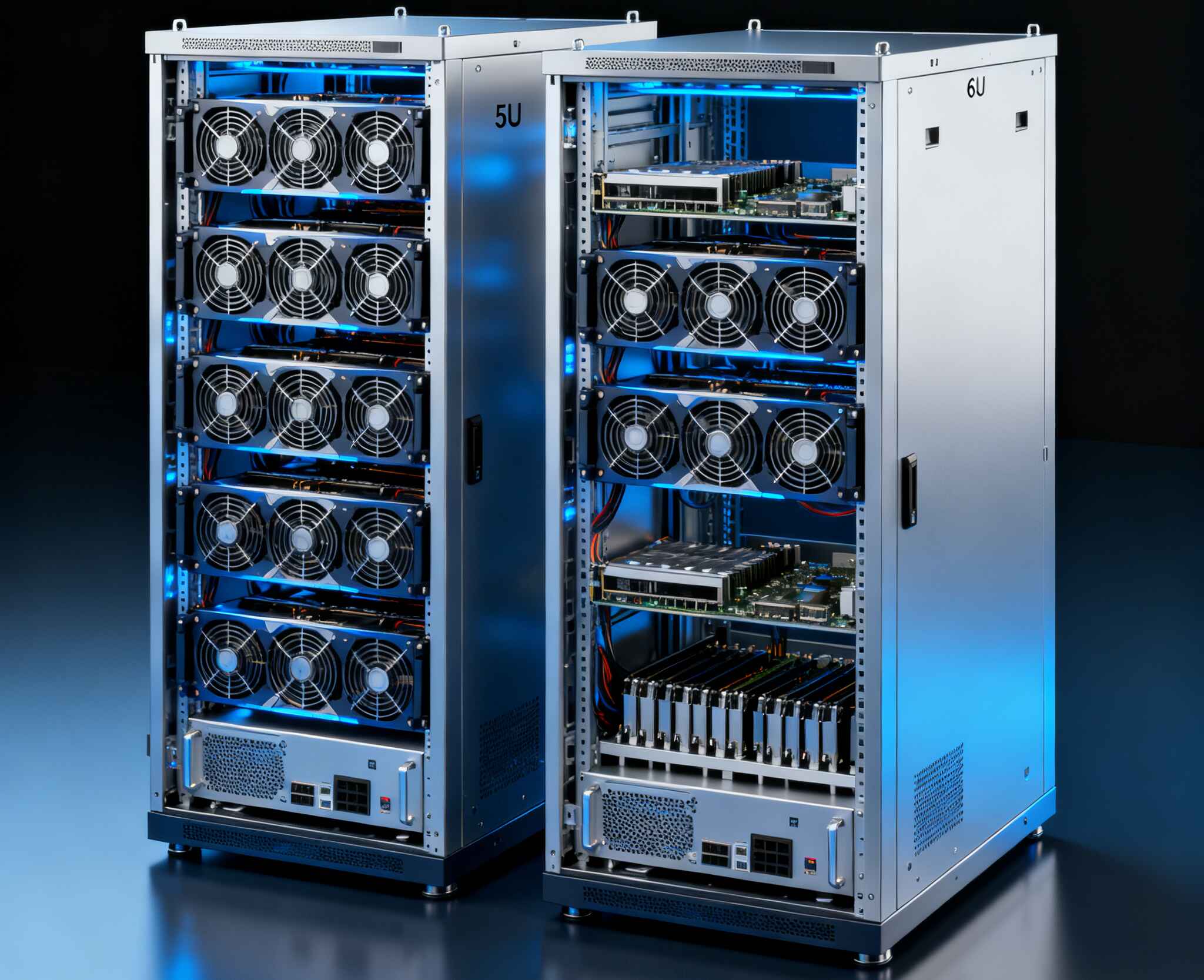
Decision checklist (quick)
- Thermal and noise budget
- If six 350–600 W-class cards run long jobs and your rack is near people, pick 6U. You’ll use slower fans, bigger rads, and keep operators happier.
- If the rack is isolated and you accept louder curves, 5U is fine with tuned airflow.
- Cabling reality
- Lots of top-entry power? Use 6U for a straighter exit and a clean bend.
- Will you rely on low-profile/90° adapters and soft cables? 5U can still be reliable—plan it on day one, not day ten.
- Service model
- Frequent GPU swaps, field tech rotations, quick RMA cycles? 6U saves minutes per touch and reduces oops-moments.
- Set-and-forget, rarely opened boxes? 5U density pays off.
- Power delivery
- Transient handling and redundancy favor 6U (bigger CRPS options, cleaner cable dressing).
- 5U works with the right PSU spec; just keep rail distribution and cable temps on your checklist.
Extra notes for buyers and builders
- Treat your chassis like a wind tunnel. Block leaks, channel air through heatsinks, not around them.
- Dust happens. Pop the filters, vacuum the foam, keep that front intake happy.
- Don’t cram every bay with spinners next to the GPU plenum; heat soaks hurt stability.
- If your rack depth is short, confirm rail kits and rear cable space before the courier shows up (we’ve all been there).
- Label cables. Future-you will high-five present-you.

